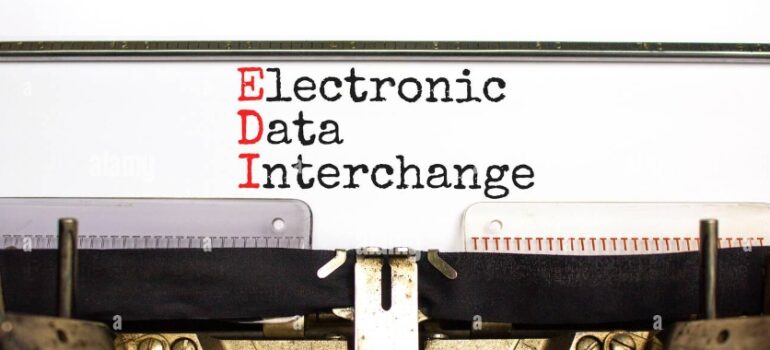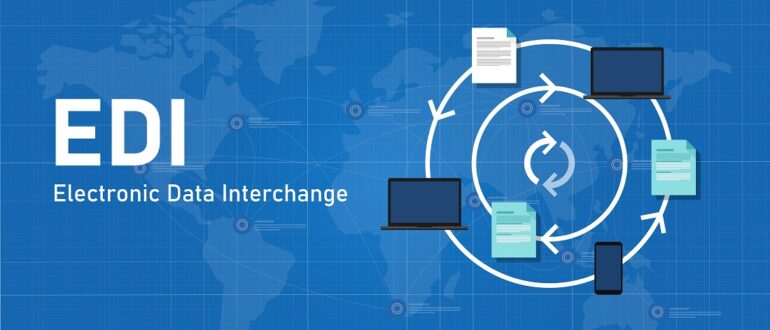Electronic data interchange (EDI) refers to the transmission of current industrial documents and statistics between computer systems. This is an approach. Due to a collection of high-quality current practices, standards, processes, and technology, including those that are brand new and contemporary, several businesses in a supply chain can exchange records without restriction.
You can electronically exchange contemporary commercial enterprise communications, such as demands, invoices, credit notes, and ASNs, with your admin accounts, warehouse, or ERP systems by using an EDI integration solution. Companies can eliminate manual re-keying activities to address electronic facts and exchange interests from their company device by deploying edi integration technology. This does away with the necessity for manual rekeying.
EDI’s Records Of Success

Engineers created EMI as telex transmissions transitioned to tape in the 1960s. Computer architectures were discovered to be able to communicate statistics between various systems. Truckers, railroads, airlines, and ocean shipping corporations started employing advanced digital manifests as a result.
EDI has experienced continuous growth in the last four years, particularly in the area of logistics and healthcare. The Medical Health Insurance Portability and Accountability Act created its own EDI protocol after the US Congress passed the HIPAA statute in 1996. In particular, in this synergy, standard Electronic Data Interchange transactions in healthcare are anticipated to evolve in the upcoming years.
The GS1 electronic records the exchange movements so that modern electronic data exchange provides consistent advice for digital company messaging. Through the standard framework, business partners can exchange pre-arranged messages online.
Companies use software applications to summarize internal data into a standardized format for easy electronic communication with other organizations. This process authorizes businesses to retain the precision and protection of their industrial information exchange, providing trustworthiness, convenience, and conciseness.
Electronic Data Interchange Used For Over 50 Years

The details on a paper report typically apply to enterprise data relevant to all disciplines, not just those related to technology. In addition, reports frequently encompass data from outside sources as well.
On the subject of Advanced Shipment Notification (ASN), which was developed to announce the receiver of today’s shipment, the products to be acquired, and the packaging of the goods, it will be utilized to develop a fresh commercial enterprise information flow.
Technology Like EDI Is Still Necessary
Millions of today’s organizations use electronic data exchange – in healthcare, transportation, finance, coverage, and more. Delivery chain logistics and transportation benefit from EDI.
It will still be an important and effective technology for supply chain logistics and transportation in the future. New inquiries are being made about Electronic Data Interchange due to the emergence and sustained expansion of potentially game-transforming technologies such as artificial intelligence, APIs, and blockchains in recent years.
For decades, electronic data exchange will continue to be essential to the enterprise. As a result, the future lies in a combination of B2B integration with disruptive technology, such as IoT, blockchain, and artificial intelligence, to provide revolutionary ranges in today’s multi-birthday party delivery chains. As a result of this innovation, IBM is at the forefront of the industry today.
In 2024, EDI Will Continue To Perform Important Functions

While EDI and APIs are connected via a cloud platform, company communication has improved along with the general performance of common companies. A B2B integration platform can connect virtual ecosystems and technologies, create doors for the company’s growth, and guide advances in the integration of cutting-edge B2B outlets and flexible machinery, several customers have confirmed. By incorporating EDI/API technology, your entire process can be optimized.
Even while you don’t have to stop using contemporary digital information exchange methods, including them in our B2B integration platform will help your company grow, serve clients, and be prepared for the future.
EDI and API integration
While EDI and APIs are connected via a cloud platform, business communication has improved along with the general performance of common companies. A B2B integration platform can connect virtual ecosystems and technologies, create doors for business growth, and guide advances in the integration of cutting-edge B2B outlets and flexible machinery, as many of our customers have confirmed. By incorporating EDI/API technology, your entire process can be optimized.
Even while you don’t have to stop using contemporary digital information exchange methods, including them in our B2B integration platform will help your company grow, serve clients, and be ready for the future.
Processes Performed In-House
Smaller corporations have integrated it through in-house processing in the past. Businesses will require large groups if they decide to participate in this project.
PEPPOL Usage Is On The Rise

Companies’ ability to find new partners in the area of public procurement was aided by the PEPPOL entry point. Creating standards for electronic transactions between vendors and governmental organizations was the goal of this endeavor, which was started with funding from the EU. By minimizing paperwork and improving overall efficiency, the goal is to make these exchanges more effective.
It is common practice to employ the PEPPOL Protocol as a mechanism to quicken the international exchange of digital records. It has recently become more well-known in countries like Singapore, New Zealand, and Australia after enjoying some time as a European phenomenon. Between institutions, this protocol makes it simple to send crucial data.
Other Factors
Even though the previous standards were not particularly popular, other options might be more effective in terms of consolidating digital data. There may be a wide variety of business-specific specifications and coding schemes for exchanging electronic information within EDI infrastructure systems utilized by critical companies.
Older electronic data interchange (EDI) companies will not be able to keep up with the recent spate of corporate mergers and acquisitions, while more technologically advanced vendors may find a way to repurpose outdated legacy programs.
In Conclusion

Finally, EDI-as-a-service can help simplify supply chain communications and increase bottom-line profits within your organization by improving control and planning.
The updates made for the twenty-first century allow corporations to integrate ultra-modern EDI standards and protocols using carrier-led and automatically guided EDI mapping.
Cloud-based self-carrier technology enables onboarding to be simplified even by accommodating various standards and protocols and ensuring that partners with little or no experience in digital records interchange can participate effectively.
In this expansion of the hybrid deployment model, controlled services are mixed with cloud-based solutions to ensure agencies can deliver the results required by modern supply chains.
